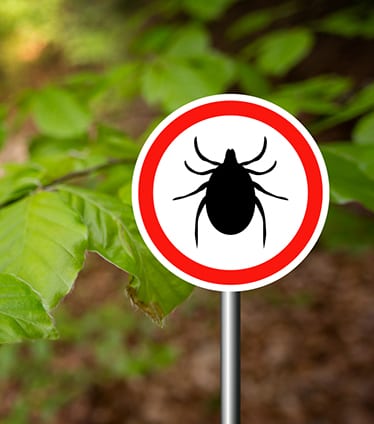Tick Prevention for Dogs
in Monroeville
According to the Centers for Disease Control and Prevention, tick-borne disease is more prevalent in Pennsylvania than in any other state, and reports of tick-borne illness are likely to increase. Between 2004 and 2016, there were 73,610 tick-borne disease cases in our state. The problem is that the tick population is growing, and this means that we’re likely to see a rise in cases of Lyme disease and other tick-borne diseases, too. Our animal hospital has provided below tick prevention and protection tips for both you and your pets.
Species of Ticks Living in Pennsylvania
While more than 25 species of ticks have been identified in Pennsylvania alone, just four account for a vast majority of submissions to the Penn State Department of Entomology. These are the American dog tick, the blacklegged tick, the Lone Star tick, and the groundhog tick.
Tick-Borne Diseases
The most common tick-borne diseases/conditions that affect pets and people include:
- Lyme disease
- Rocky Mountain spotted fever
- Rickettsioses
- Babesiosis
- Ehrlichiosis/Anaplasmosis
- Tick paralysis

How to Prevent Tick Bites and Tick-Borne Diseases
Take extra precaution to protect your pet and yourself against ticks. There are many ways you can do this.
- Is your pet consistently receiving their parasite preventatives? Make sure they’re current so they can stay protected against tick bites and avoid infection.
- When you go for walks with your pet, stay away from thickly wooded areas with lots of low vegetation, where ticks lie in wait.
- Fields of tall grasses may also be harboring ticks, so steer clear of these as well.
- Assess your yard—is there a lot of brush, tall grass, and leaf litter? Clear these up. Keep grass and brush trimmed, and clear away plant debris.
- If you decide to take a walk in the woods, opt for light-colored clothing treated with permethrin. Tuck your pants into your socks, and wear a hat to cover your hair.
- Use bug spray containing DEET for extra protection.
- Thoroughly check yourself and your pet for ticks before going into your house. That includes checking between your pet’s toes, under their tail, inside their ears, and under their arms/legs.
Tick Removal
If you find a tick on yourself or your pet, take a pair of tweezers and grasp the tick as close to your (or your pet’s) skin as possible. Grip gently and just as gently pull the tick away from the skin so that its entire body, including the head, are pulled free from under the skin. You don’t want to squash the tick or end up leaving its head and mouthparts embedded under the skin.
When the tick is removed, clean the bite with rubbing alcohol or warm, soapy water.

